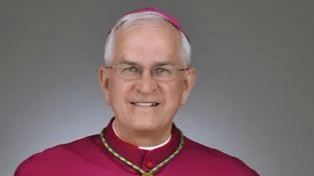
Reverend Joseph E. Kurtz, D.D. Bishop | Archdiocese of Louisville
After consecutive days of severe storms, parts of Kentucky faced historic flooding. The Ohio River's water levels were expected to peak on April 9, reaching 36.8 feet at the McAlpine Lock and Dam, marking the eighth highest level on record, according to the National Weather Service. Governors across affected regions declared states of emergency as five flood-related deaths were reported.
In the Archdiocese of Louisville, numerous churches experienced the floods. "More than 10 parishes have reported leaking roofs," said Brad Harruff of Catholic Mutual Group, adding that St. Albert the Great School and Holy Trinity Church faced serious water damage. St. Clare Oratory, now under St. Ambrose Church's care, was only accessible by boat.
Father Benedict J. Brown of St. Ambrose noted, "When the meteorologist tells us the Ohio River will crest, the Salt River will crest, the Rolling Fork River will crest, folks around St. Clare know how high it’ll get." Past floods have imprinted marks inside the church, betraying the building's long flooding history.
Church volunteers mobilized quickly. "They took the pews, altars, communion rail and other furnishings, placed them in the trailer and hauled them away," said Father Brown. With the recent flooding, next steps involve cleaning and mold prevention.
Holy Trinity Church reported less severe flooding. "Our parking lot was flooded — it came up to the steps of the parish office," said Father Augustine Judd. Some parishioners had to leave their homes, contributing to lower Mass attendance. Father Judd praised parishioners for their immediate response: "I didn’t have to call anybody. They just take care of it."
The impact extended to St. Albert the Great School, where kindergarten classrooms faced recurring flooding. "I don’t think it’s salvageable now," said Larry Brunner. The school administration swiftly relocated classes, ensuring minimal disruption for students after spring break.
"Remarkable" teachers at St. Albert's adapted quickly, using spring break to ready new classroom spaces, preventing any loss of educational time for students. The situation highlights ongoing community efforts and the potential challenges some institutions might face moving forward.






 Alerts Sign-up
Alerts Sign-up